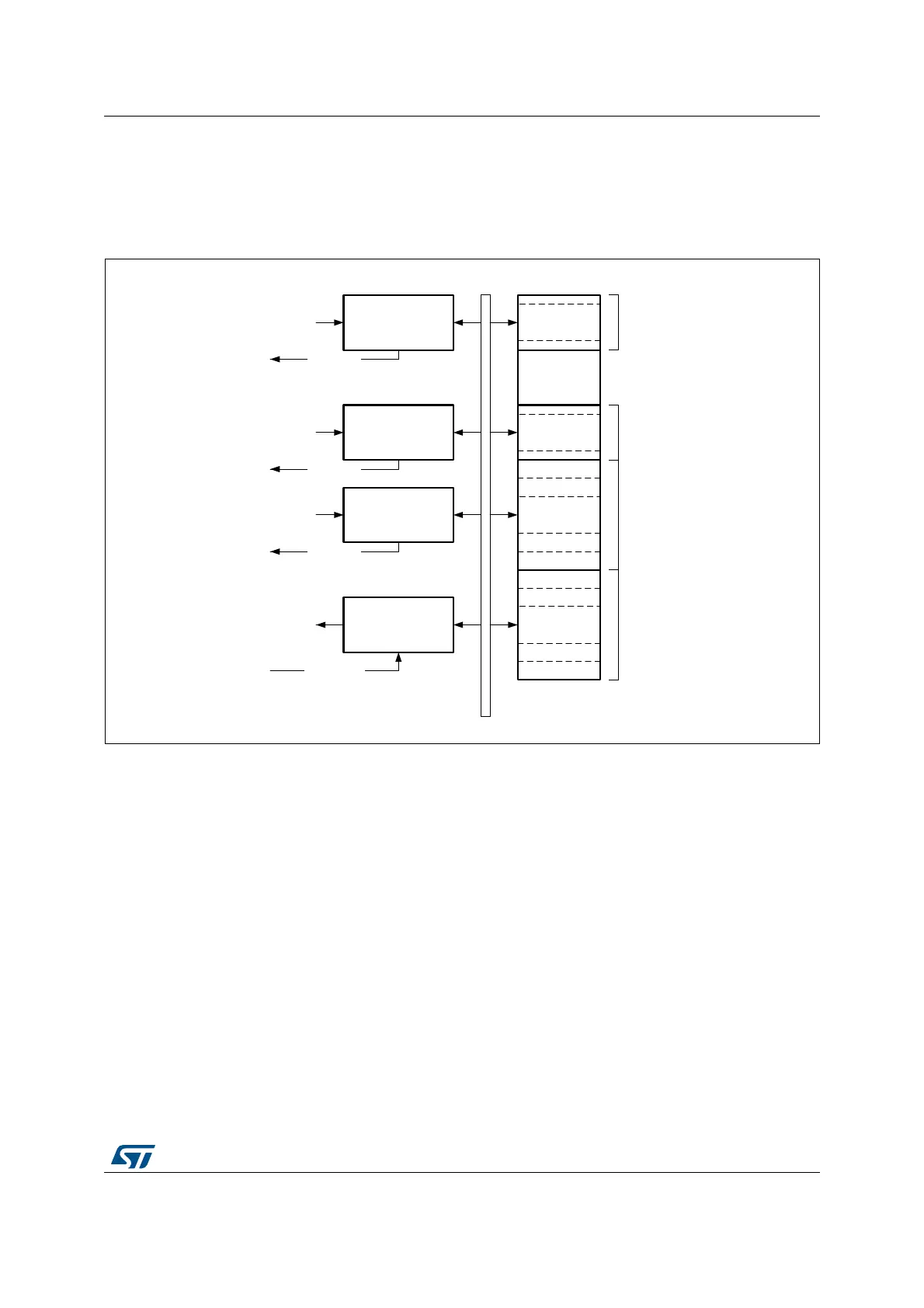RM0390 Rev 4 1099/1328
RM0390 USB on-the-go full-speed/high-speed (OTG_FS/OTG_HS)
1264
the device’s role. In peripheral mode an additional Tx FIFO is instructed for each active IN
endpoint. Any FIFO size is software configured to better meet the application requirements.
31.11.1 Peripheral FIFO architecture
Figure 407. Device-mode FIFO address mapping and AHB FIFO access mapping
Peripheral Rx FIFO
The OTG peripheral uses a single receive FIFO that receives the data directed to all OUT
endpoints. Received packets are stacked back-to-back until free space is available in the Rx
FIFO. The status of the received packet (which contains the OUT endpoint destination
number, the byte count, the data PID and the validity of the received data) is also stored by
the core on top of the data payload. When no more space is available, host transactions are
NACKed and an interrupt is received on the addressed endpoint. The size of the receive
FIFO is configured in the receive FIFO size register (OTG_GRXFSIZ).
The single receive FIFO architecture makes it more efficient for the USB peripheral to fill in
the receive RAM buffer:
• All OUT endpoints share the same RAM buffer (shared FIFO)
• The OTG_FS/OTG_HS core can fill in the receive FIFO up to the limit for any host
sequence of OUT tokens
The application keeps receiving the Rx FIFO non-empty interrupt (RXFLVL bit in
OTG_GINTSTS) as long as there is at least one packet available for download. It reads the
packet information from the receive status read and pop register (OTG_GRXSTSP) and
finally pops data off the receive FIFO by reading from the endpoint-related pop address.
06Y9
'HGLFDWHG7[
),)2[FRQWURO
RSWLRQDO
,1HQGSRLQW7[),)2[
'),)2SXVKDFFHVV
IURP$+%
0$&SRS
7[),)2[
SDFNHW
27*B',(37;)[>@
27*B',(37;)[>@
'HGLFDWHG7[
),)2FRQWURO
RSWLRQDO
,1HQGSRLQW7[),)2
'),)2SXVKDFFHVV
IURP$+%
7[),)2
SDFNHW
27*B',(37;)>@
27*B',(37;)>@
0$&SRS
'HGLFDWHG7[
),)2FRQWURO
RSWLRQDO
,1HQGSRLQW7[),)2
'),)2SXVKDFFHVV
IURP$+%
7[),)2
SDFNHW
27*B',(37;)>@
27*B',(37;)>@
0$&SRS
'HGLFDWHG7[
),)2FRQWURO
RSWLRQDO
$Q\287HQGSRLQW
'),)2SRSDFFHVV
IURP$+%
5[SDFNHWV
27*B*5;)6,=>@
0$&SXVK
$ 5[VWDUWDGGUHVVIL[HG
WR
6LQJOHGDWD
),)2

